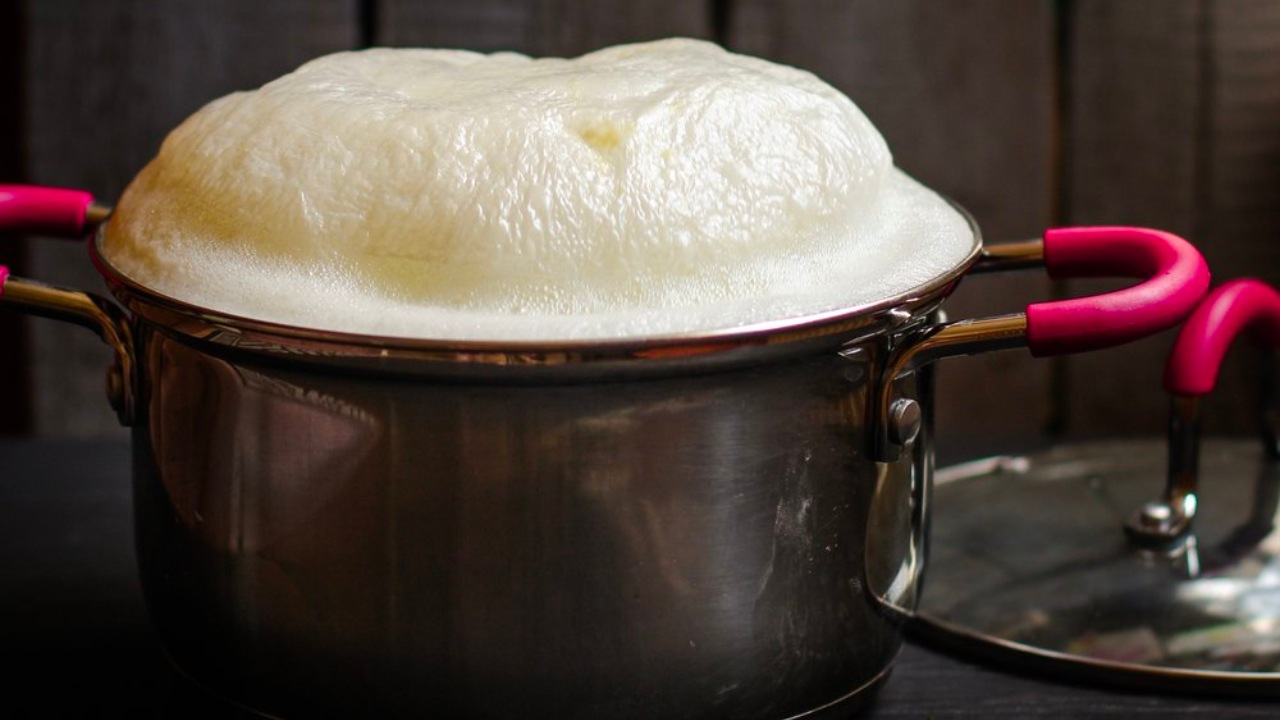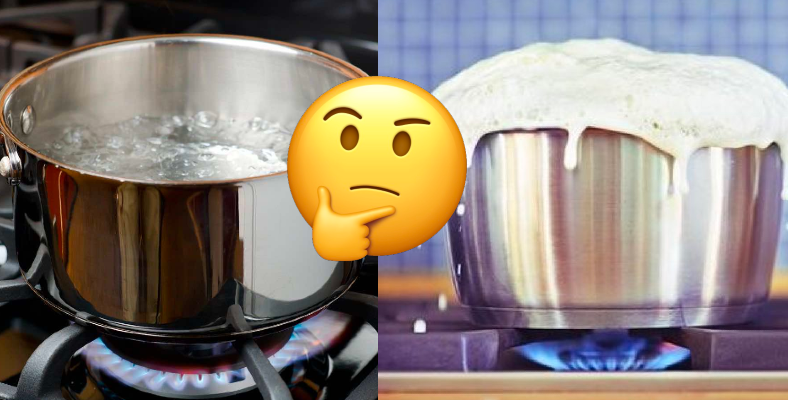Milk is a beverage that we all boil at home regularly to drink or ferment yoghurt. We both drink it and turn it into yoghurt and consume it with pleasure, but putting the milk on the stove and boiling it is a nightmare. Because the worry that it has overflowed or will overflow causes us to stand in front of the pot for minutes.
However, when we boil water, we do not have to deal with such a problem. At first glance, they are both liquid, but when it comes to Why do things change when it comes to boiling them?
So, at this point, what makes milk and water different and what is it? Why does milk, whose stains on the stove are a nightmare to clean, overflow when boiled?
First, let’s take a look at the contents of water and milk.
Water consists of 2 hydrogen and 1 oxygen atom. (H2O) It is formed by coming together, but this liquid is actually formed by the reaction of carbon monoxide and hydrogen.
If it’s milk It is a chemical mixture that is a blend of various proteins, fats and water. In short, while water is a simple substance, milk is a more complex liquid.
In order for the milk to be ready to drink, the protein, fat and water in it must interact with each other. But these substances that make up milk are It literally evolves when heated. Namely, when milk is boiled, the internal structure of the protein changes and its current liquid form is replaced by solidification.
This solidification creates a new opportunity for friendship with the fat molecules and all the substances in the milk, coalesces and coagulates to form a completely different gel-like substance.
This newly formed form of milk begins to move towards the top, so to speak, with the energy provided by the heat.
Evaporation occurs only at the surface. This newly formed protein and fat combination also sees the top water evaporate much more. The mass and volume ratio of the already small amount of water on the surface decreases further and A layer of coagulated protein and fat covers it.
Of course, the pot in which milk is boiled is quite hot. With this much heat, water begins to turn into steam. This steam is lighter than water and begins its upward journey like protein and fat. However, this journey is left unfinished because when he is about to rise to the surface, a gel form that will not allow him to pass is waiting for him.
Then, as the water vapor moves inward, bubbles form. When more and more water vapor appears due to heating, the same process of catching and pushing results in the formation of numerous bubbles. In summary, this is the story of the appearance of the foam on boiling milk.
This process continues until either protein and fat or water are exhausted.
However, existing foams are pushed up by newly formed foams. It will become large enough to push out of the pot. Then the inevitable end is quite obvious. Now it’s time to look for the detergent that will best clean the milk stains on the stove.
In short, there is a three-stage situation here. Coagulation and elevation of fats and proteins, water vapor rises from the bottom and foam forms. The end result is overflow.
When it comes to boiling water, the consequences are not so tragic. When water is boiled, only one of the above steps occurs. Room is the upward rise of water vapor.
Because steam has a straight path from bottom to top and in water, There is no substance that can prevent water vapor from escaping. Water moves freely when it wants to rise to the surface. For this reason, no foam is formed and no spreading or overflow is observed.
Now that we know why milk overflows, it is now easier to find solutions to prevent this overflow.
The easiest way to prevent this overflow is to stop the foam forming in the milk. This can be prevented by mixing the milk. With the stirring action, the steam comes out and the layer formed on top is redistributed throughout the pot and For a while, the vapor cannot be trapped any longer. Of course, as soon as stirring is stopped, the layer will re-form.
Another way to achieve the same result is is to place a spoon or ladle on top of the pot. Thus, an escape route is opened for the steam rising to the surface. This method also works for a while, but as the milk gets hotter, the rate at which steam forms exceeds the rate at which steam can escape.
Eventually, the remaining steam starts to get squeezed on both sides and A large foam bubble will cause the pot to overflow.
What if we completely prevent the formation of foam?

An unlikely way to stop this spread is to boil the milk in a large pan. The logic of this is that bubbles formed by water vapor trapped in the coagulated material, is to let it get too big to be balanced.
If the milk is placed in a fairly large pot, the bubbles will have more room to grow and the surface tension provided by the coagulating material will When it cannot hold these bubbles, the bubbles will burst. This effectively stops the formation of foam so that the milk does not spill.
Our other content that may interest you:
RELATED NEWS
Why Do Turks and Mongolians Have So Much Difficulty Digesting Cow’s Milk, Unlike Europeans?
RELATED NEWS
Who Thought of Fermenting Milk: How Was Yoghurt, an Original Turkish Food, Made for the First Time?
RELATED NEWS
What happens if an adult drinks breast milk regularly?
RELATED NEWS
Why is it dangerous to give cow’s milk to babies under 1 year old?
RELATED NEWS
